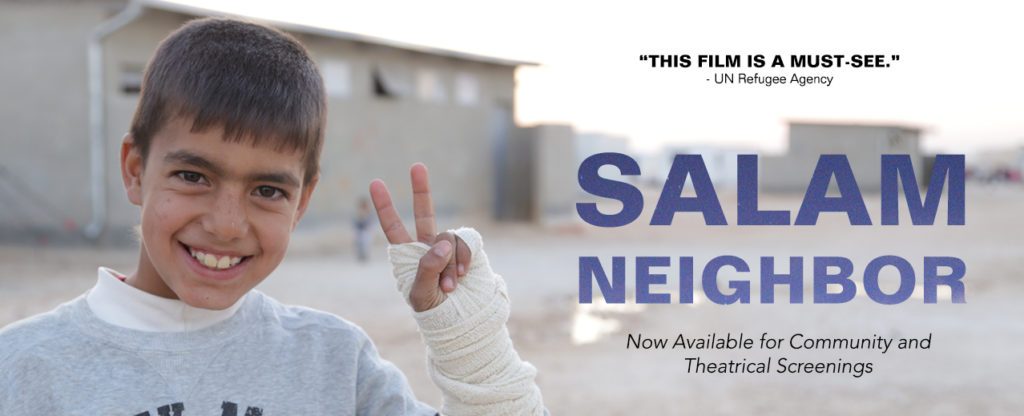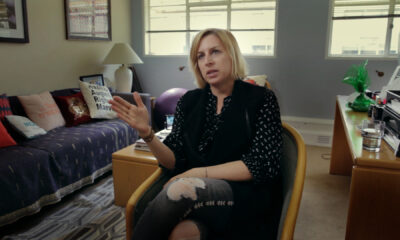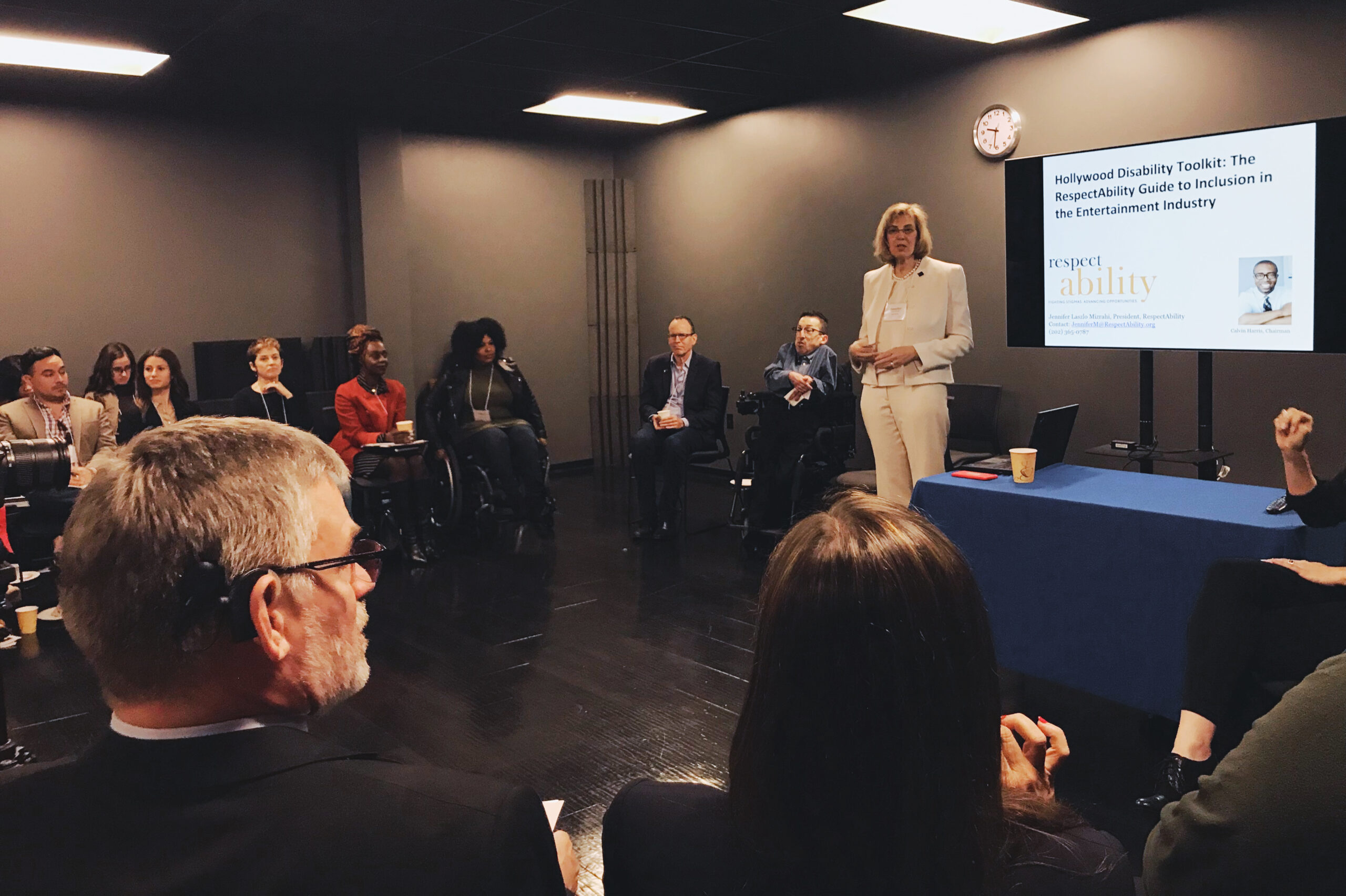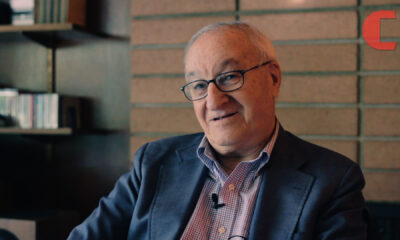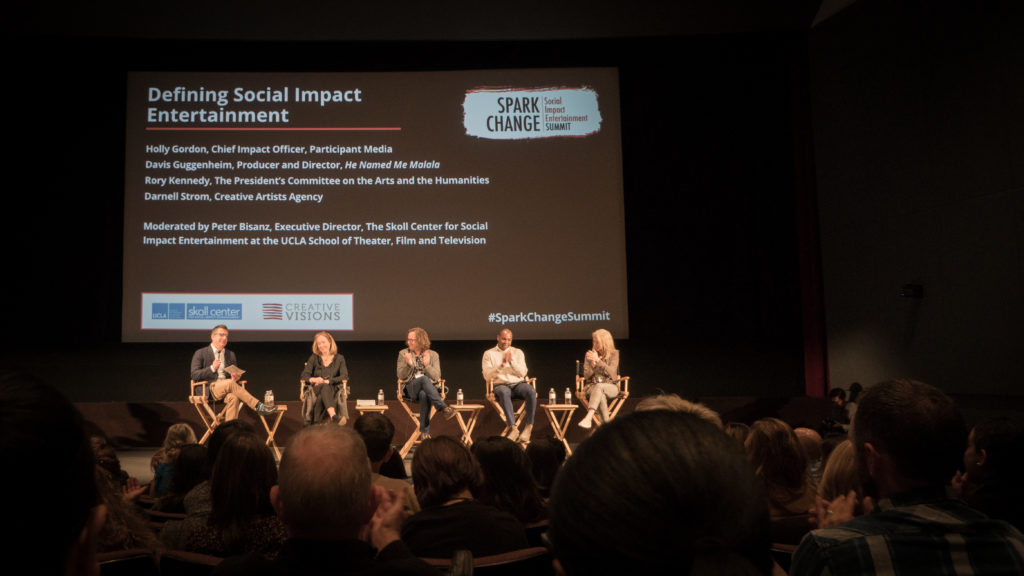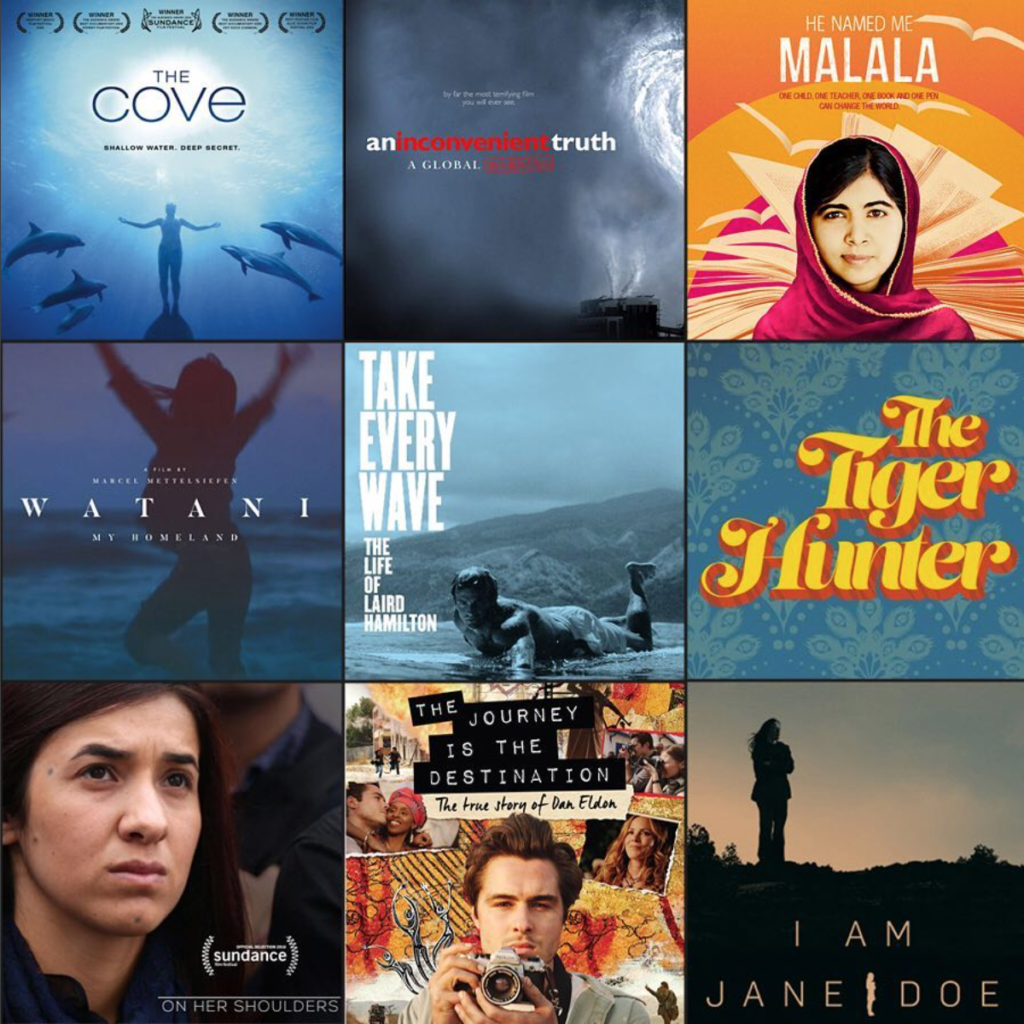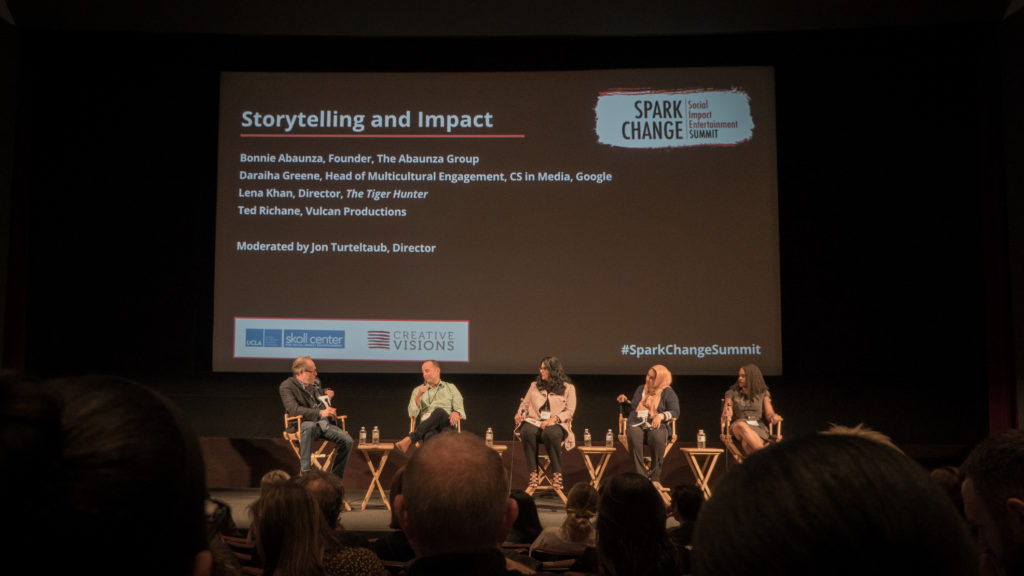Exchange
For the Everyday Documentarian: From Idea to Impact
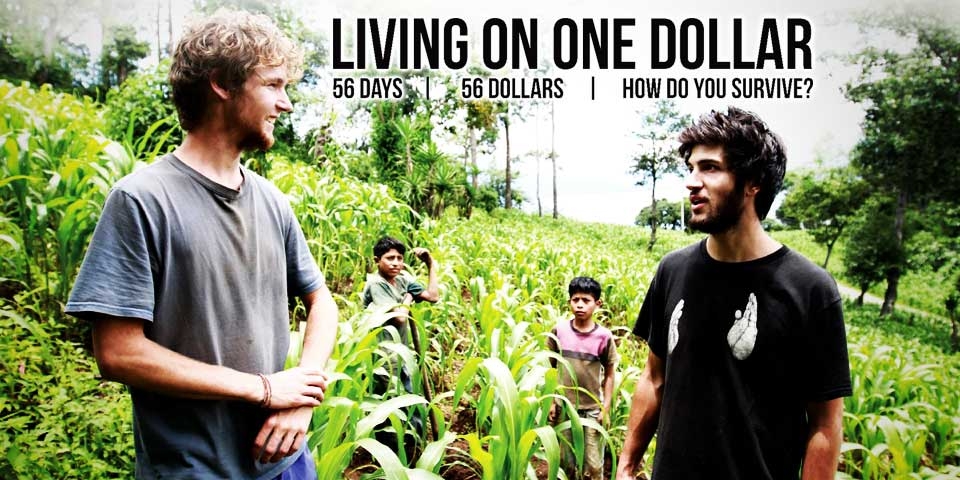
Chris Temple, one of the founders of Living on One, a documentary and impact campaign powerhouse, speaks to Cinema of Change about getting into the social impact entertainment space and what it takes to build a campaign around the film. Their documentaries, Living On One Dollar and Salam Neighbor, explore the pressing issues of poverty and the refugee crisis, and have gone on to create social and political change on an international level. Chris advocates for the everyday documentarian – anyone can and should make a documentary.
How does someone start in the impact entertainment space? What resources do you recommend?
Watch as much content as you possibly can. Follow other filmmakers across social media from diverse backgrounds. Check out No Film School. Start creating even when you don’t know how or doubt yourself! When it comes to making a documentary or any film for that matter, define your goals, audience, and intended change. Think about the primary impact dynamic, which is the #1 thing you want to come out of the film. Remember that filmmaking is a long journey. For Living On One Dollar, there were times when we were exporting version 65 of our cut and wondering how we would ever finish, but you’ll always make it happen in the end. And don’t let the gear hold you back! We filmed both our documentaries on DSLRs with lapel mics and H4N zooms. You don’t need a super fancy camera to tell a good story.
How can someone ensure that they don’t fall into “voluntourism” or have a “White Savior” attitude?
We never started our project with the goal of helping, but instead with a focus on learning. When we first embarked on our trip to Guatemala, we left with the intention of understanding the things we read about in our textbooks. And when we started to create the film, we partnered with organizations that were already doing incredible work on the ground. For example, through our collaboration with Mayan Families, we ensure that our donations go directly towards community development and are used effectively. Also recognize where you can add value, which for us was storytelling. Then, think about how you can support the cause and partner with people that can work in other aspects better than you can.
How do you cope with the emotions that arise during the documentary process?
At one point during our filming of Salam Neighbor, I didn’t want to be on camera anymore because it was an emotional moment. We were encouraging a young boy to go to school, yet later learned that his school had previously been bombed, so he experiences post-traumatic stress in school environments.
We have to recognize our own limitations as filmmakers and aid-makers, and express humility that we don’t have all the answers. The people we interacted with were the ones teaching us. They’re the experts in their own lives. We did experience some guilt coming home, almost reverse culture shock at our entitlement and culture of consumption, but guilt is not a productive emotion. It doesn’t create change; it just makes you feel worse, so how can you channel that feeling into action and creativity?
Recognize that the people you film with are people. Show the film to them before you release it online. Make updates. Continue building that relationship.
How do you overcome the fear of facing controversial subjects?
We were definitely nervous before entering the refugee camps, but realized that that stemmed from our implicit bias towards the Middle East and refugees from media and news. Of course, we sought advice from war journalists and had a 35-page security protocol, but never once did we feel unsafe.
How do you approach building a social impact campaign?
Any good impact campaign evolves from your story because the story is what people see and are moved by. Read impact guides like the one from AFI Docs Impact Lab or the Impact Field Guide. For Salam Neighbor, we focused on individualizing the refugee crisis and targeted communities that had huge refugee populations, yet weren’t really engaging with them, such as in Nebraska or Dallas Fort Worth, especially those places that were more conservative in their views of refugees. With 1001 Media, a fellow producer on the film based in the Middle East with cultural knowledge and historical perspectives, we launched an educational guide and are implementing that into the Common Core curriculum. We’re reaching out to teachers that we’ve worked with in the past and are hosting screenings as well.
How do you build partnerships with many of the development-based organizations and non-profits both in the United States and in the countries you work with? How do you approach such a collaboration?
The hardest part is starting out because you don’t have much credibility or a track record. You may only occasionally receive a reply, but listen as much as possible to those individuals who are willing to give advice. We actually connected with one of our mentors by just tweeting him again and again until he responded and agreed to watch our trailer. It’s a numbers game in some ways, but once you do hear back, prove that you’ve done your homework and are serious in what you’re asking. Have a specific question and show that you’ve gotten as far as you can without the extra help.
What has been the most difficult part of building the campaigns for Living On One Dollar and Salam Neighbor?
Finding the finances. Investors usually see a more direct reason to support a film versus an impact campaign. But slowly, we’re proving to funders that a national tour or building a curriculum is worth the time. Living On One Dollar was released years ago, but just last week, we ran a fundraiser to sponsor a new preschool in the community there. Our ongoing engagement with the community is very important to us. These stories and the impact we can make don’t end when the credits roll.
Out of curiosity, how has For My Son been doing? Do you see a difference in reach between VR and traditional film?
For My Son is most effective in person, which is why we brought it on tour and presented it at over 750 screenings as a VR exhibit. It’s currently an exhibit at the U.S. Holocaust Memorial Museum! The technology for VR isn’t quite there yet to leapfrog into creating successful documentaries, but at the end of the day, it all depends on your goal.
What is coming up next?
We do have a feature documentary in the works that is inspired by individuals from previous films, kind of like a Boyhood, journey-of-their-lives style film. Stay tuned on our social media handles, @LivingonOne, as we will be providing teasers and more information soon!
Thank you, Chris, for speaking to Cinema of Change about your experiences with impact filmmaking. We hope audiences find this insightful and empowered to begin their own projects. As always, feel free to contact CoC or Living on One for advice, but remember to do your homework first!
Companies
Aging and Nuclear War in the Writers’ Room
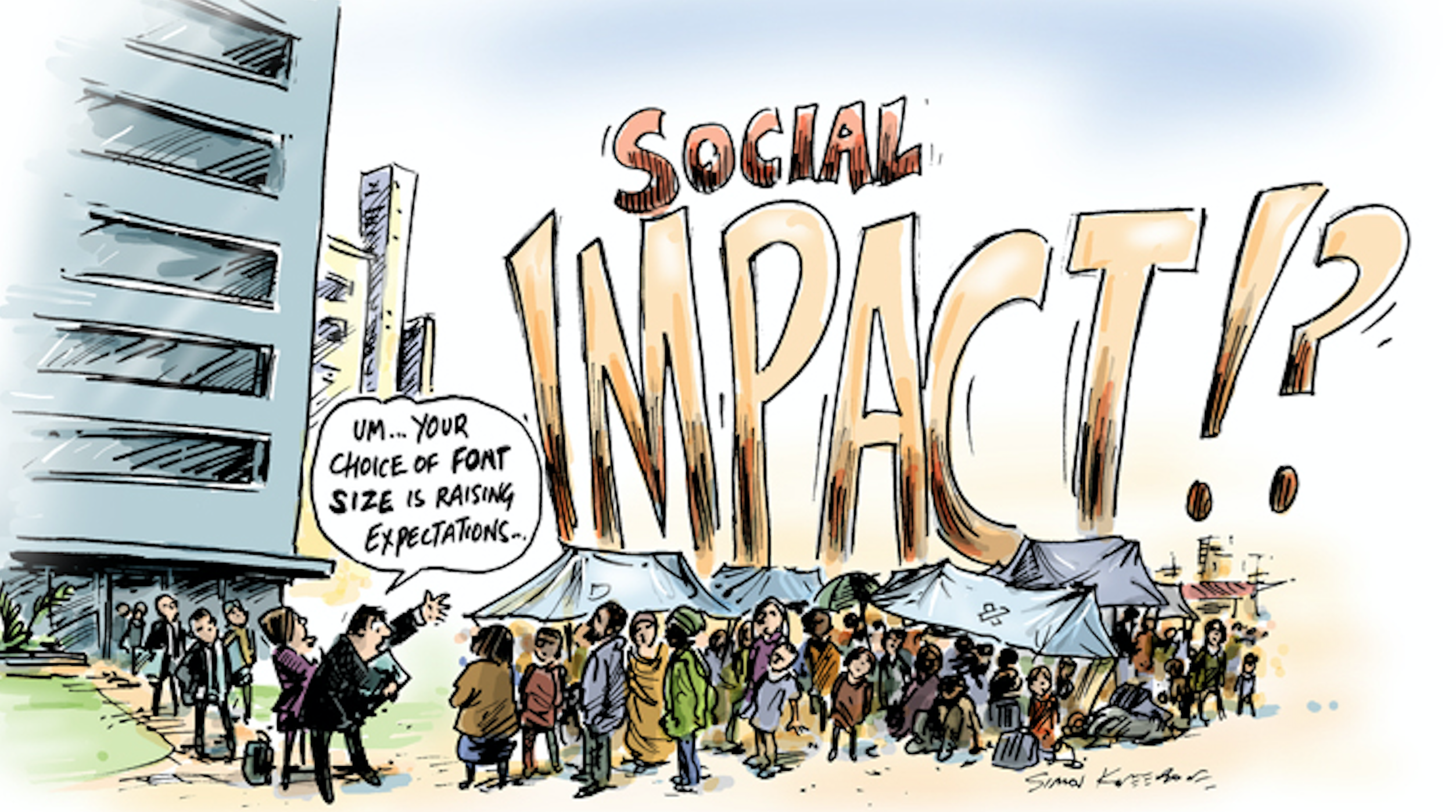
Have you ever heard of Hollywood, Health, & Society? Most likely not.
Yet, you have probably watched something that they have worked on. With over 1,100 aired storylines from 2012-2017 including those for Grey’s Anatomy, NCIS, and black-ish, Hollywood, Health, & Society (HH&S) serves to provide entertainment industry writers with accurate information on storylines related to health, safety, and national security. This pretty much includes everything from aging to nuclear war.
For example, that April 30th, 2017, episode of American Crime that included immigration, opiate abuse, and human trafficking in the plot? Data analysis is currently in progress for a cross-sectional study of viewers.
With the USC Annenberg Norman Lear Center, HH&S not only pairs experts with writers, but also conducts extensive research on their impact and the correlation between seeing things on screen and audiences’ changed perceptions of those topics. HH&S maintains a low public profile, but is very much involved in the writers’ rooms and guilds. Their approach is two-fold:
1) Reactive – responding to requests and needs for HH&S services, which manifests in the form of phone calls and/or emails to the center, expert consultations, guidance on accurate language.
2) Proactive – introducing writers and entertainment professionals to subject matter experts through panel discussions, screenings and immersive events; a quarterly newsletter, tip sheets and impact studies.
Students, you are welcome to use this resource as well! HH&S serves writers at all stages of their careers, although of course, shows on the air or already in production have priority.
To learn more about the research and impact studies behind HH&S:
– Featured list of tip sheets for writers
– CDC’s list of tip sheets from A-Z
– On location trips for writers to gain understanding for certain topics
Follow Hollywood, Health, and Society on Facebook and Twitter to stay updated with their work and upcoming opportunities.
Companies
Social Impact Filmmaking: The How-To

“Social impact entertainment’s time has come,” Teri Schwartz, the dean of UCLA School of Theater, Film, and Television said as she welcomed everyone to the first Skoll Center summit. Nonprofit leaders, social campaign strategists, experts in distribution and funding, and a variety of creators gathered to define social impact entertainment, learn more about storytelling, and discuss new distribution and funding models.
Students and professionals alike joined in the conversation thinking about questions like: Is intention enough? What is the difference between storytelling and advocacy? What are examples of previously successful social impact campaigns and how can we follow those models? In this time of mass streaming platforms, how can artists market their social impact content and demand awareness?
The social impact entertainment field is developing, but very much alive. However, unlike industries that sometimes hide information to maximize self-growth, it is critically important for us to collaborate in this space and build a community of entertainment activists. Cinema of Change sent several to this summit to do exactly that: share what we’ve learned and be honest about what we don’t know yet.
So, what’s the secret sauce? How can films change the world?
Truth is, like the entertainment industry itself, there is not one path to ending climate change or human trafficking through film (unfortunately, I know). However, whether it is documentary, narrative, or docu-fiction, everything begins with storytelling.
-
STORYTELLING
No matter how important the statistics are or how beautiful the production design is, people are not going to watch a film that has no story. Sometimes, that is why a narrative film may even have a larger impact on a social issue than a documentary film because people relate and empathize to the fictional characters more and will walk away with those emotions in mind.
Holly Gordon, Chief Impact Officer of Participant Media: There’s a difference between storytelling and advocacy. Storytelling comes 100% from intention, but also creativity. “Creativity means intention and the ability to tell a story.” And that’s what leads to transformational change, which is long-term and visionary, compared to transactional change.
Hayley Pappas, Head of RYOT: As a reminder, “It doesn’t always have to be heartbreaking to be transformative. You can laugh a lot and see something in a new way.”
Davis Guggenheim, director of An Inconvenient Truth and He Named Me Malala: “Without the intention, you’re not going to do it. It’s too hard.” Documentaries can hit a wall sometimes because everyone working is so passionate about the topic, but when you go into the editing room, there’s no story.
As much as we support documentaries here at Cinema of Change, we also believe that mega blockbusters and social impact are not mutually exclusive. In fact, we wrote an article on exactly why we think the opposite here.
Darnell Strom, Creative Artists Agency: “Story matters. Representation on screen matters and that has a ripple effect.” Sometimes, filmmakers may not set out to have a specific intention, yet organic social issue campaigns arise from a great story. Take Black Panther for example. Disney probably did not set out to create a transformative piece about black culture through a Marvel comic book story, but the film had a majority black cast and depicted a woman leading the technological developments. Now, nonprofits are jumping up about women in STEM and young black boys and girls can watch the film and be like, Hey, if someone who looks like me can do it, so can I.
-
MEASURING SOCIAL IMPACT
Great, this film tells an incredible story about a disadvantaged youth rising from poverty and attending a prestigious university, but how do we measure the social impact? In other terms, how do we calculate the number of minds changed, or decisions made to take action? Even Gordon agreed that transformational change is very hard to measure, but it can be done.
Holly Gordon: For Girls Rising, which is both a film and nonprofit about the importance of educating young girls, measurement meant hiring Mission Management to analyze impact in three ways: changed minds (reach), changed lives (money raised), and changed policy (shifts in government policy). Gordon worked on relationship building with a number of nonprofits and even leaders like Michelle Obama to develop impact partnerships and shape campaigns around the themes in the documentary, before a single frame was even shot.
Rory Kennedy, director of Last Days in Vietnam and Ghosts of Abu Ghraib: Social impact is often thought of in large numbers: raising millions of dollars, changing thousands of lives, but it is also just as important on an individual level. For example, in Last Days in Vietnam, Stuart Herrington, a counterintelligence officer in the Vietnam War, was responsible for safely evacuating American soldiers at end of the war, but he knowingly left 422 Vietnamese soldiers there despite promising them safety. At the premiere of the documentary, Harrington reflected on his guilt and regret for leaving all those lives behind and said that he dreaded ever meeting one of the 422. Sure enough, one of the Vietnamese soldiers Harrington left walked up on stage and told him, “I forgive you.” That moment left both of the men in tears and it may not have changed a hundred lives, but it changed two.
-
IMPORTANCE OF SOCIAL IMPACT CAMPAIGNS
When a film wraps, the awareness and campaign work most definitely does not. Social impact campaigns are critical to accelerating awareness and creating a sustainable, lasting effect. They’re arguably more effective when launched before the film even begins production.
Bonnie Abaunza, founder of The Abaunza Group which has launched campaigns for The Hunting Ground, Hotel Rwanda, Cries from Syria: These impact campaigns are designed to intersect all industries and companies. Impact comes from educating students, mobilizing ambassadors, challenging companies, and partnering with nonprofits and policy leaders who care. One example of a highly successful social impact campaign is the one for Blood Diamond. Lena Khan, the director of The Tiger Hunter, even told Abaunza that she has a conflict-free diamond on her hand because of the film. Jewelry companies like Tiffany & Co. joined the movement by labelling their diamonds as “conflict-free” especially because more and more people started asking about it. Amnesty International created an entire curriculum to introduce the issue to students.
Ted Richane, Vulcan Productions Impact and Engagement: At the end of the day, “We can have our strategies, but the best thing we can do is listen. The community is awesome and going to be inspired and go to take the issue upon themselves.” That’s the ultimate goal, right? Launch the campaign, tell the story, and empower others to share and do something about it all.
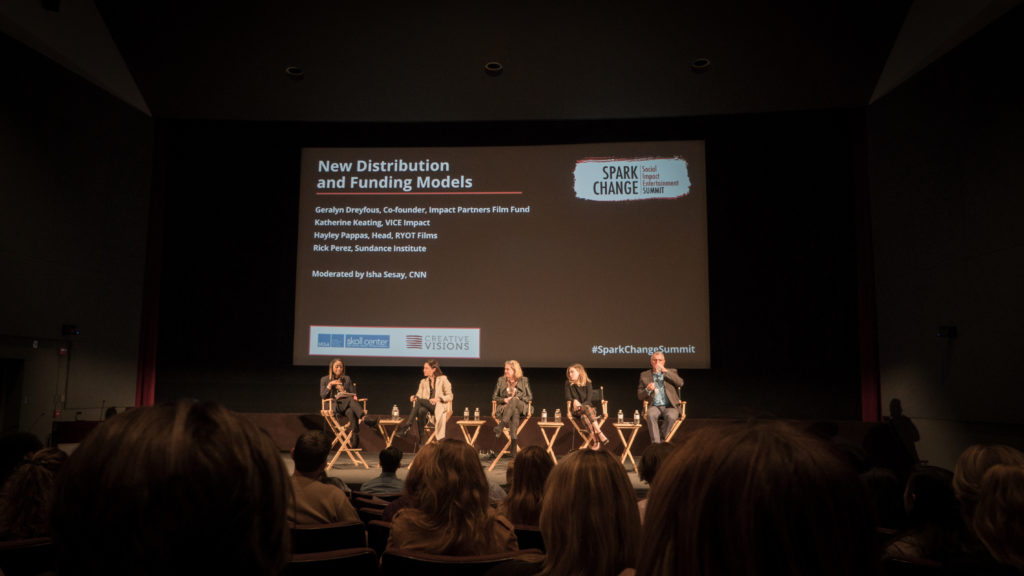
-
DISTRIBUTING AND FUNDING SOCIAL IMPACT FILMS
The world of distribution and funding can be quite daunting to enter, because no matter how passionate someone is, it is always difficult to get the money needed to transform passion into action. Major companies are also a huge part of the conversation. How do they decide what films to green light? How can indie artists break out with both an entertaining film and one that creates change?
Geralyn Dreyfous, Co-founder of Impact Partners Film Fund: There is a shift nowadays in the distribution world. Only two films sold at Sundance this year. Netflix is commissioning their own content. Companies are not paying their creators enough, especially for short form content. To the artists: “You love it so much, you’d do it for free. But you have to stop doing it for free.” When starting out with trying to find investors, you can always pitch to the Impact Partners Film Fund, but if you’re not successful there, think about incentives and break up your budget into smaller chunks for financing. Can you give donors credits, on screen thanks, private screenings, and other benefits? “Mostly, founders are interested in amplifying and aligning your content with their philanthropic goals. They need to know that you’re the person to tell that story.”
Katherine Keating, Vice Impact: With a cross-platform company like Vice, it’s very important to think about who the audience is and where they are consuming their content. Some things are meant to be a series of five 1-minute shorts on Facebook, even though the artist may have pitched it as five 1-hour series. Another way to integrate the impact campaign is through brand partnership with large, respected companies. For example, Colgate, one of the biggest toothpaste sellers, is now promoting water conservation and looking at ways to reduce plastic use in their packaging. Companies are starting to recognize the importance of social impact and it’s our job as their commercial creators to push them in that direction.
Cinema of Change previously interviewed entertainment attorney Mark Litwak about the “Filmmaking Pitfalls in Deal-Making and Distribution”; read what Litwak has to say here.
NOW WHAT?
“To create in this chaotic world peace, to seek in this gathering darkness light, to transform the hatred into a new kind of loving. Together, we can transform this world. It’s going to be really hard. But we can do it, and it will be through storytelling and courageous people like you.” (Kathy Eldon, Co-founder of Creative Visions). With that, the SPARK CHANGE Social Impact Entertainment Summit came to end, but our work is just beginning.
As audiences, we have to demand for content that does not further marginalize communities and perpetuate stereotypes.
As companies, we cannot stay silent to the injustices in our world in order to protect our brand.
As filmmakers, we are not just producing beautiful, cinematic pieces. We have the responsibility to use those creations to spark change.
—
List of all organizations in attendance: Cause Cinema, CNN, Creative Activists Network, Creative Artists Agency, Creative Visions (co-host), Google, I am Jane Doe, Impact Partners Film Fund, Living on One, Majority Film, Participant Media (sponsor), President’s Committee on Arts and Humanities, RYOT, Skoll Center (co-host), Sundance Institute, The Abaunza Group, Vice, Vulcan Productions (sponsor) UCLA School of Theater Film Television
*Sayings in quotation marks are directly quoted. Other remarks are paraphrased.
Academia
Are Film Schools Doing Enough?
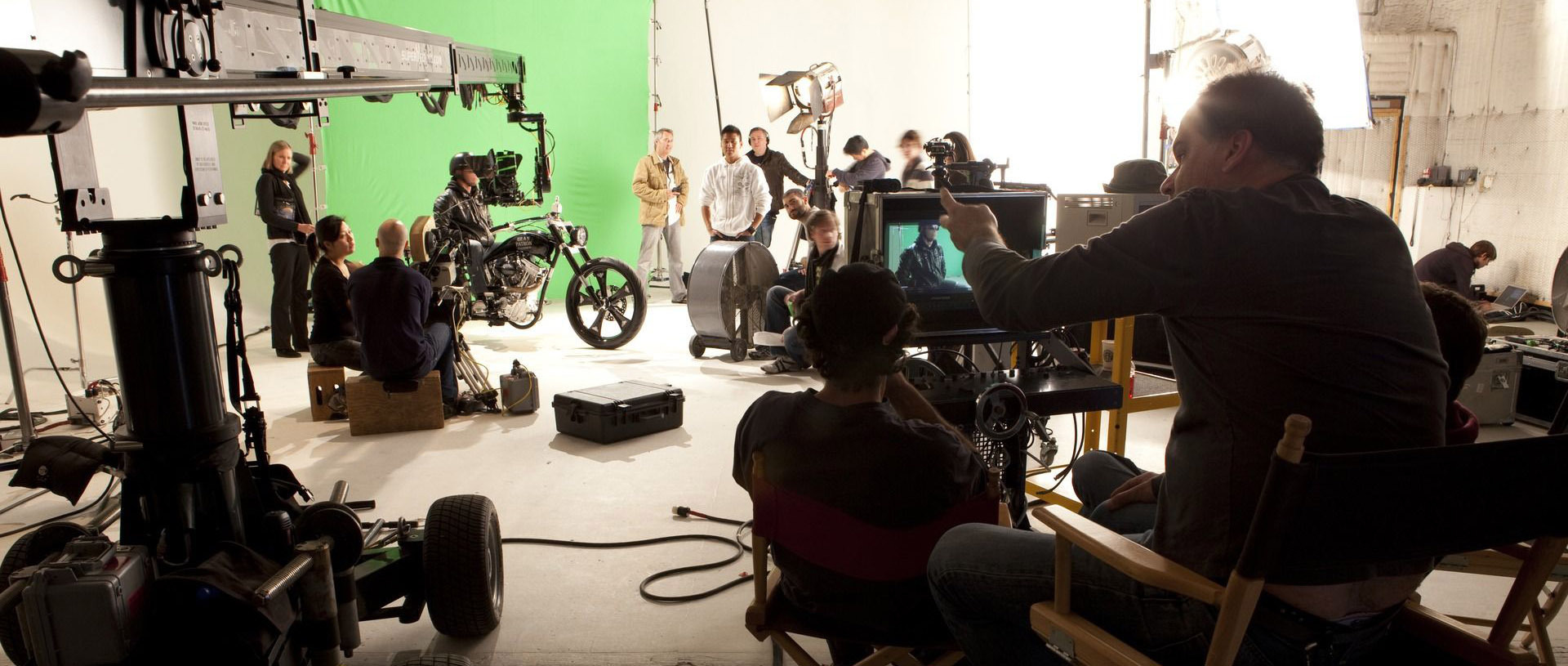
Film schools get a bad reputation. It could be because Werner Herzog says they are a waste of time and money, because Steven Spielberg, James Cameron, Sir Ridley Scott, Peter Jackson, David Fincher, and Paul Thomas Anderson didn’t go or dropped out no later than the first day, or because those that do enroll, emerge under a mountain of debt. Take Brett Ratner, graduating NYU owing $250,000, the equivalent of a law degree or MBA from an Ivey League. His investment of course paid off, but throwing the chips down on a costly degree in the arts, especially film, is not to be mistaken as anything but a gamble.
Film is one of the most significant financial and cultural exports of the United States. It is a language that unites the world. So it is with the upmost importance that we champion quality and artistic discipline in our institutions, to cultivate the next generation of artists to push the frontier beyond the horizon. To do this though, we must be confident in the question of whether film schools are doing enough. What is the value beyond what can be self-taught?
The mechanics of putting a movie together is the obsession of most film degrees and this is not to be overlooked. To those that are not figuring it out by themselves, the wisdom of their professors can save significant time, money, and nausea in understanding the nuances of what to do and what not to do. Take something as simple as contracts. Many first-time filmmakers get their work caught in limbo amidst battles over creative control and ownership that could easily be bypassed with the proper guidance and counsel at the onset.
In an industry where you’re only as good as those you’re connected to, college is also a great place to meet the army that will wage war to turn your vision into a reality. For the introverted writer, I cannot think of anything more beneficial.
There is one area though that most film schools have seemed to overlook, and that is beyond the mechanics, beyond the completion of the movie. What is the effect of cinema on its audience? Of course, we all ask what makes a good story? But so many movies today, especially those with millennial audiences, succeed because they connect with the global zeitgeist. That is, they shine a light for the culture, articulating thoughts, feelings, and injustices so that clarity, catharsis, or anger is evoked. For more on why this is instrumental to box office success and a prolific career as a filmmaker, see “The Making of the Mega-Blockbuster: Big Money and Big Impact”
There is one school, however, that’s making an admirable effort to fill this void. Woodbury University has introduced a degree program called Master of Arts in Media and Social Justice, to teach students the connection between what they make and how it’s received. Their prescience is to be applauded and it is the hope that more film programs nationwide realize adding this component to film education is essential.
The crux of it all is championing quality while keeping costs low. How do you make sure students are not saddled with too much debt while at the same time maintaining a top film school in the world? Whether it’s a degree in film or a degree in botany, unfortunately prices have ballooned across the board, so it is the duty then of all departments and professors to make sure the curriculum is thorough and complete.
While Woodbury charts new territory, combing production with classes typically found in media studies, it is time for other schools to join the bandwagon. What is filmmaking without understanding its effect on its audience? What is culinary school without taste testing? In an increasingly competitive and cross-cultural world, this added knowledge can make a significant difference in one’s career and abilities as an artist.
Storytelling is and has always been about having something to say, whether it’s on the surface or buried and coded. Filmmakers obsessed with the mechanics spin together sentences in darkened rooms. It’s time to raise the lights and acknowledge and understand those within earshot. We owe it to our audiences and to ourselves in the fight to make better films.
-

 SIE Magazine9 years ago
SIE Magazine9 years agoWhat Makes A Masterpiece and Blockbuster Work?
-
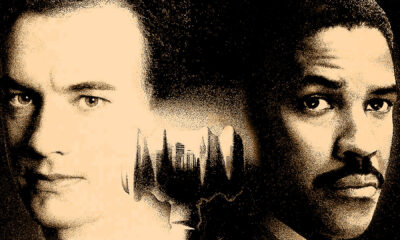
 Filmmakers9 years ago
Filmmakers9 years agoFilms That Changed The World: Philadelphia (1993)
-

 Companies6 years ago
Companies6 years agoSocial Impact Filmmaking: The How-To
-
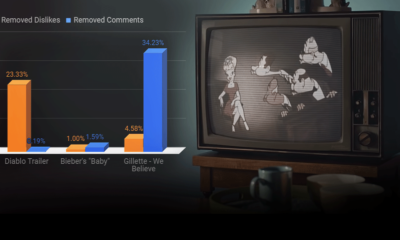
 Media Impact5 years ago
Media Impact5 years agoCan We Believe The Gillette Ad?
-

 SIE Magazine9 years ago
SIE Magazine9 years agoDie Welle and Lesson Plan: A Story Told Two Ways
-

 Academia8 years ago
Academia8 years agoFilmmaking Pitfalls in Deal-Making and Distribution
-
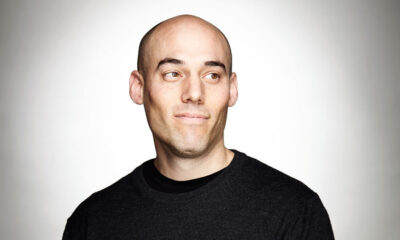
 Academia8 years ago
Academia8 years agoJoshua Oppenheimer: Why Filmmakers Shouldn’t Chase Impact
-

 Filmmakers9 years ago
Filmmakers9 years agoStephen Hawking vs The Elephant Man

